Article sections
A Virtual Local Area Network (VLAN) is a network topology configured according to a logical scheme rather than the physical layout. Hosts in the same VLAN communicate with each other as if they are in a LAN. However, hosts in different VLANs cannot communicate with each other directly.
Now let´s learn how to configure the tag VLAN on L2 Managed Switches by the following example:
Network Topology: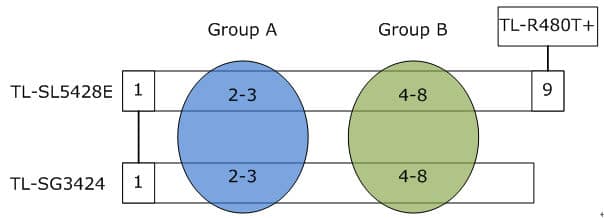

Here we take TL-SG5428E and TL-SG3424 as an example.
connects to TL-SG3424 with an Ethernet cable in port 1. TL-SL5428E connects to the Internet via TL-R480T+ in port 9.
The computers of Group A connect to port2-3 of TL-SL5428E and port2-3 of TL-SG3424. The Group B connects to port 4-8 of them.
Purpose:
1 The computers from Group A can communicate with each other.
2 The computers from Group B can communicate with each other.
3 The computers of Group A and Group B can’t communicate with each other.
4 Both the Group A and Group B can go to Internet through TL-R480T+
VLAN Configuration parameters:
|
VLAN 100
|
VLAN 101
|
VLAN 102
|
|
|
TL-SL5428E
|
1-3,9
|
1,4-9
|
1-9
|
|
TL-SG3424
|
1-3
|
1,4-8
|
1-8
|
To achieve Purpose 1, we create the VLAN whose VLAN ID is 100.
To achieve Purpose 2, we create the VLAN whose VLAN ID is 101
By setting VLAN 100 and 101,we have achieved Purpose 3.
To achieve Purpose 4, we create the VLAN whose VLAN ID is 102
|
Switch
|
TL-SL5428E
|
TL-SG3424
|
|||||
|
Port
|
1
|
2-3
|
4-8
|
9
|
1
|
2-3
|
4-8
|
|
Link Type
|
TRUNK
|
GENERAL
|
GENERAL
|
GENERAL
|
TRUNK
|
GENERAL
|
GENERAL
|
|
Egress Rule
|
TAG
|
UNTAG
|
UNTAG
|
UNTAG
|
TAG
|
UNTAG
|
UNTAG
|
|
PVID
|
1
|
100
|
101
|
102
|
1
|
100
|
101
|
The table above shows other parameters.
Now ,let’s start to configure Switch TL-SL5428E:
PARTI: Defining Link Type of ports:
TRUNK: The trunk port can be added in multiple VLANs and used to connect the cascaded network device, i.e. switch to switch. The default egress rule is TAG.
GENERAL: The general port can also be added in multiple VLANs. The default egress rule is UNTAG(Computers usually only accept untagged frames.).
ACCESS: The ACCESS port can be added in a single VLAN ID.
We can define the Link Type according to the second table.To take the port 1 as an example:
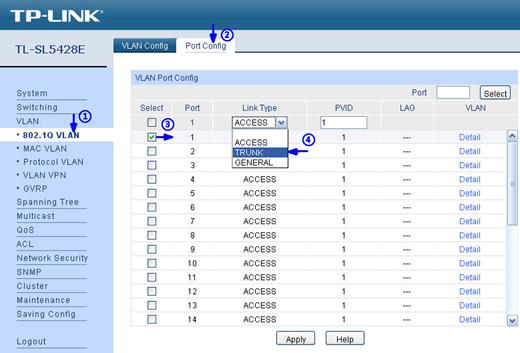
We can configure the rest ports in the same way .Finally, we get a table like this:
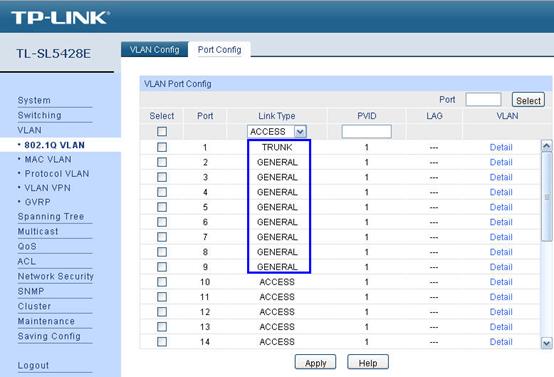
Part II: Create VLANs:
According to the first table, we need 3 vlans:VLAN100,VLAN101,VLAN102.
Please go to 802.1Q VLAN->VLAN Config and click Create button. In the new pop-up window, we can create a new VLAN like this:
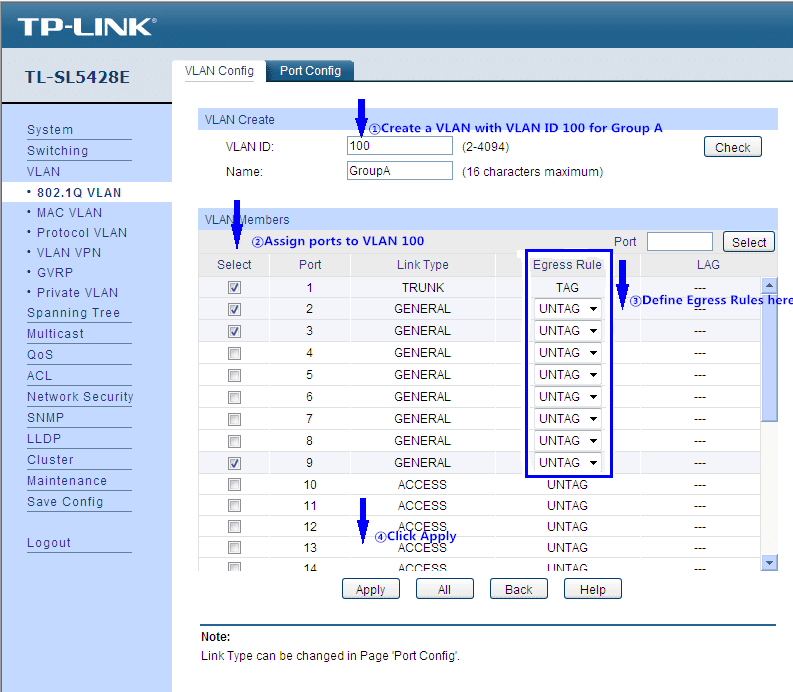
Similarly ,we can accomplish the configuration of the other 2 VLANs and we will get.
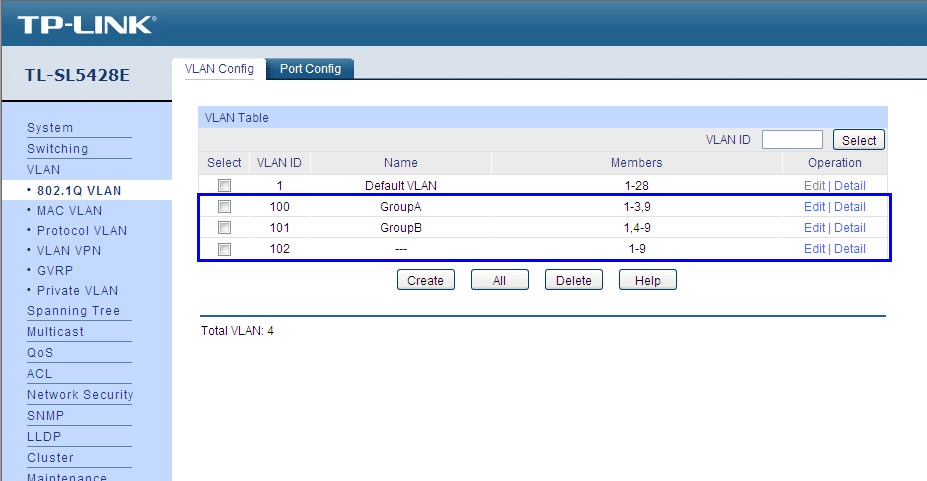
Part III: Setting PVID
PVID(Port VLAN ID) is the default VID of the port. When the switch receives an un-VLAN-tagged frames, it will add a VLAN tag to the frame according to the PVID if its received port and forwarding the frames.
For example, the PVID of port 2 is 100.When the port 2 receives a frame from the PC(untagged),the switch will tagged the frame with VLAN ID is 100 according to the PVID of port 2.So the frame will only be forwarded to the ports of VLAN 100.
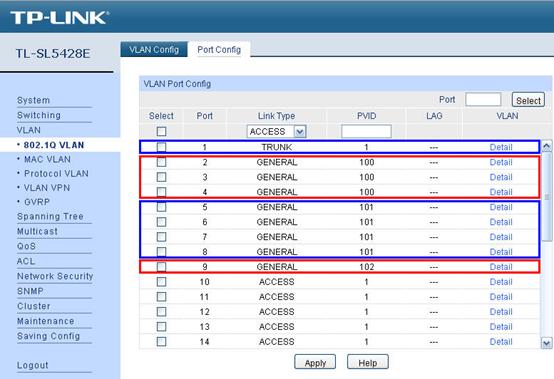
We have already accomplished all the setting so far. But don’t forget to go to Savind Config to save the settings.
Configure Switch TL-SG3424
We can configure the TL-SG3424 in the same way according to the Table 1 and Table2.
Now, the network will work as described in Purpose.